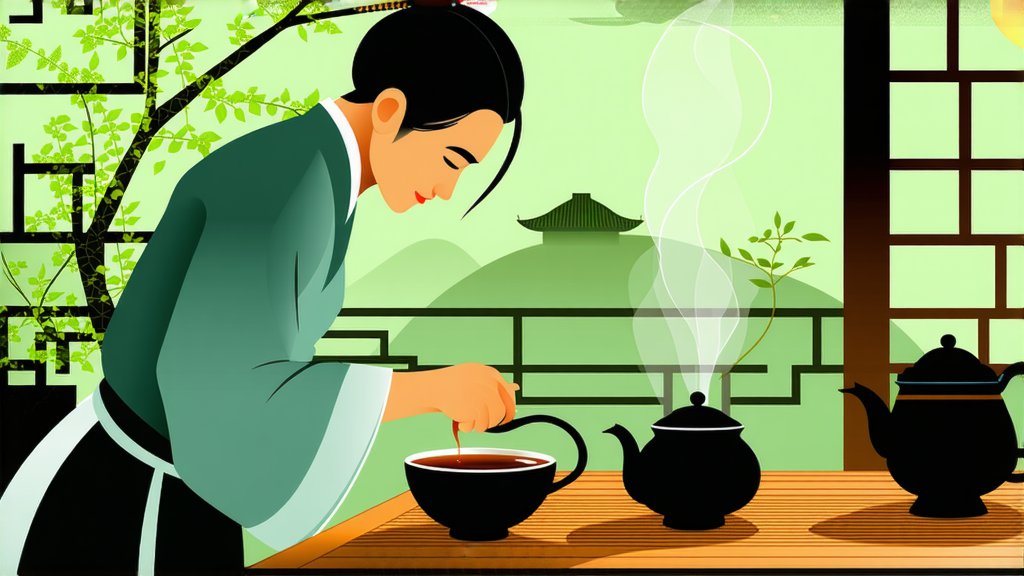
Chinese tea culture is a rich tapestry of flavors, traditions, and history that has been cherished for thousands of years. Among the many varieties of tea that China has to offer, Keemun stands out as one of the most celebrated black teas in the world. This article delves into the history, types, production techniques, and tasting methods of Keemun, providing an insight into this beloved Chinese black tea.
History of Keemun Tea
Keemun, also known as Qimen in Chinese, originates from the Qimen County in the Huangshan district of Anhui Province. The history of Keemun tea dates back to the Tang Dynasty (618-907 AD), but it was during the Qing Dynasty (1644-1912 AD) that Keemun gained international recognition. It was the first Chinese black tea to be exported to Europe, particularly to England, where it became highly sought after for its unique flavor profile.
Types of Keemun Tea
Keemun tea is categorized into several grades, each with its distinct characteristics. The main types include:
-
Keemun Mao Feng: This is the highest grade of Keemun, characterized by its tight, fine, and curly leaves with a bright coppery color. It has a rich, sweet aroma and a smooth, mellow taste with a hint of fruitiness.
-
Keemun Hao Ya: This grade features larger leaves and is known for its robust flavor and astringency. It has a deep red color and a strong, lasting aroma.
-
Keemun Congou: Congou is a lower grade of Keemun, with larger, less uniform leaves. It offers a more robust and less refined taste compared to Mao Feng and Hao Ya.
-
Keemun Broken Orange Pekoe: This is a broken leaf grade, which means the leaves are smaller and more fragmented. It has a strong, full-bodied flavor and is often used for blending.
Production Techniques
The production of Keemun tea involves several steps, each crucial in developing the tea's unique characteristics:
-
Picking: The leaves are handpicked in the early spring, usually from the tender, young leaves and buds. The picking standard for Keemun is quite strict, with only the top two leaves and a bud being selected.
-
Withering: The freshly picked leaves are spread out to wither, which helps in reducing the moisture content and softening the leaves, preparing them for the next steps.
-
Oxidation: This is the process that gives black tea its characteristic dark color and strong flavor. The leaves are exposed to oxygen, which causes the enzymes in the leaves to break down, leading to the development of the tea's color and flavor.
-
Firing: After oxidation, the leaves are fired to stop the enzymatic activity and fix the color and flavor. This step is crucial in determining the final taste and aroma of the tea.
-
Sorting and Grading: The dried leaves are then sorted by size and grade, ensuring that each grade meets the specific quality standards.
Tasting Methods
To fully appreciate the nuances of Keemun tea, it is essential to follow proper tasting methods:
-
Preparation: Use fresh, cold water that has been brought to a boil. The water temperature should be around 90-95°C (194-203°F) to extract the best flavors from the tea leaves.
-
Steeping Time: Allow the tea to steep for 3-5 minutes, depending on the grade and personal taste preferences. Keemun Mao Feng may require a shorter steeping time, while Hao Ya and Congou can handle a longer steeping.
-
品鉴: Begin by observing the color of the tea, which should be a bright, clear red. Then, take a deep breath to appreciate the aroma, which can range from floral and fruity to smoky and earthy, depending on the grade. Finally, sip the tea and let it linger on the palate to experience its full-bodied flavor and aftertaste.
Keemun tea is not only a beverage but also a reflection of China's rich tea culture and history. Its unique production techniques and grading system have made it a favorite among tea connoisseurs worldwide. By understanding the history, types, production techniques, and tasting methods of Keemun, one can truly appreciate the depth and complexity of this exquisite Chinese black tea.